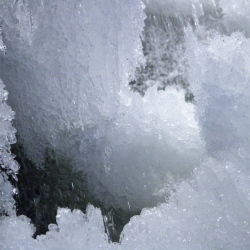
Something weird is happening on the dwarf planet Ceres, which at 950 kilometers wide is the largest object in the Asteroid Belt. Since its arrival in Ceres’s vicinity earlier this spring, NASA’s Dawn spacecraft has glimpsed highly reflective bright spots dotting the surface. No one yet knows what exactly they are or how they got there.
Periodically snapping pictures as it gradually spirals down to a low-altitude “survey” orbit, Dawn has provided a slow-motion zoom-in on the dwarf planet, allowing imaginations to run wild as experts and laypeople alike seek to discern structures and patterns in the low-resolution images. Consequently, many possible explanations for the bright spots have emerged, some more plausible than others, and the ideas shift with each new vista Dawn beams home. The spots could be salts deposited by briny vapors from gushing geysers or, less likely, plumes from water-spewing “cryovolcanoes.”
Now some scientists think the spots may be reflections from water ice, after viewing Dawn’s newest images. These pictures, taken from an altitude of 13,500 kilometers and at a resolution of 1.3 kilometers per pixel, capture a full rotation of Ceres. That relatively high resolution allowed researchers to determine that the brightness and flatness of some of the spots closely matches what would be expected of ice.
It also revealed that what looked to be one or two large bright spots in a crater actually is a complex of many much smaller spots. “As our pictures have increased in resolution, the brightest spot broke into two spots, and now we can see a whole field of tiny spots in that crater,” says Christopher Russell, principal investigator for the Dawn mission at the University of California, Los Angeles. “We are now sure that the light could be sunlight bouncing back from the surface, similar to what we would expect from a reflection from ice on the surface.”
The presence of exposed ice on Ceres would be a surprise, because ice should be unstable on the dwarf planet’s airless surface, turning from a solid into a gas and drifting into space rather than sticking around. That process, however, may be exactly what the Herschel Space Observatory saw last year when it observed tenuous wisps of water vapor around Ceres.
